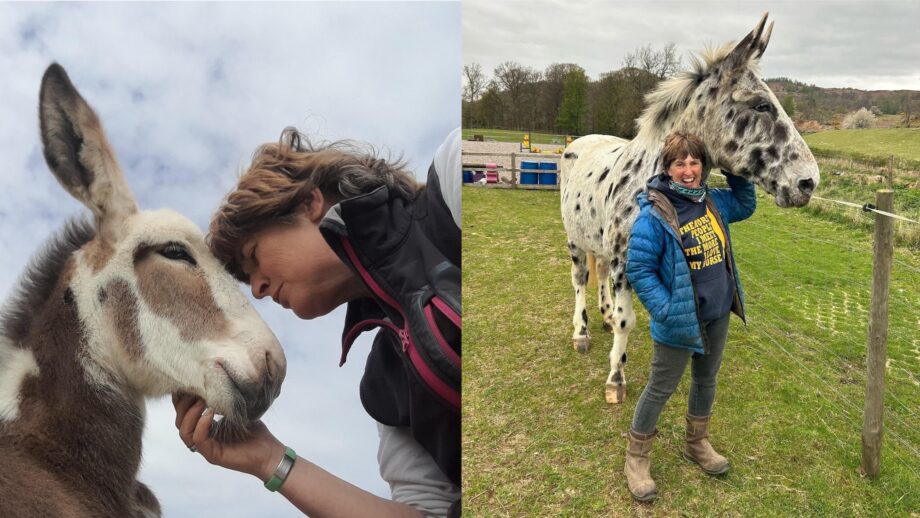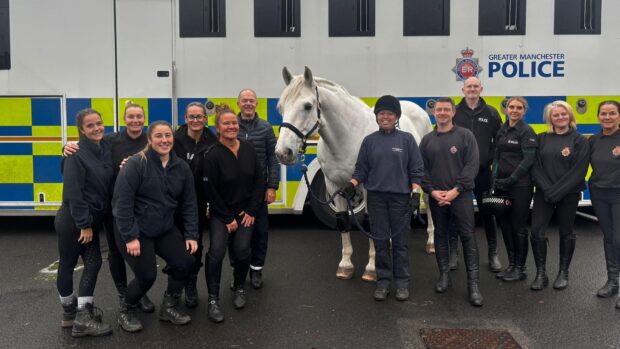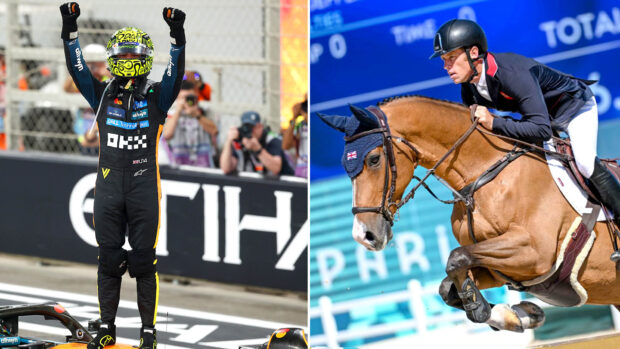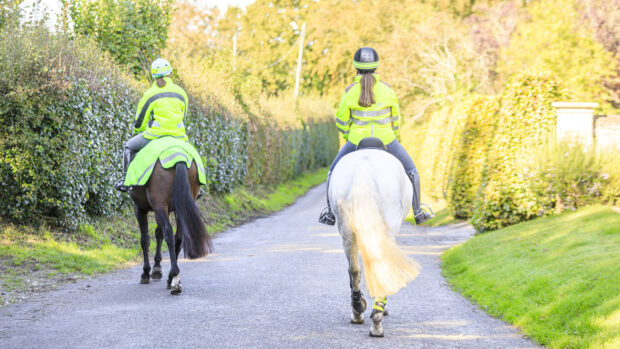Meet Milton the 16hh spotty mule, who’s ridden tackless, used to have “the slowest bolt in the world” and is enjoying life with a few giant donkeys.
Karen Inkster, who runs livery and training yard Equine Unlimited in Dunkeld, Scotland, told H&H she is trying to put mules “back on the map”, and helping to preserve mammoth donkeys, an endangered species. She has a 20-month-old jack, a jenny and a four-month-old foal, and hopes to breed more donkeys, and mules big enough to ride.
“Mules are the most wonderful, multi-talented equine you can imagine,” she said. “They are more sure-footed than horses, don’t need as much food, live longer, tend to have less ailments to name just a few great things about them – and their ears. Come on, who doesn’t love a massive ear?!”
Karen, whose yard promotes positive reinforcement training, got her first donkey by accident, a few years ago.
“Somebody said ‘You don’t want a 30-year-old donkey who’s laminitic, do you, because if I can’t find a home for her I’m going to have to put her to sleep’. I went and got her and fell in love.”
At that jenny’s age, she did not live a great deal longer, but Karen was already smitten with donkeys.
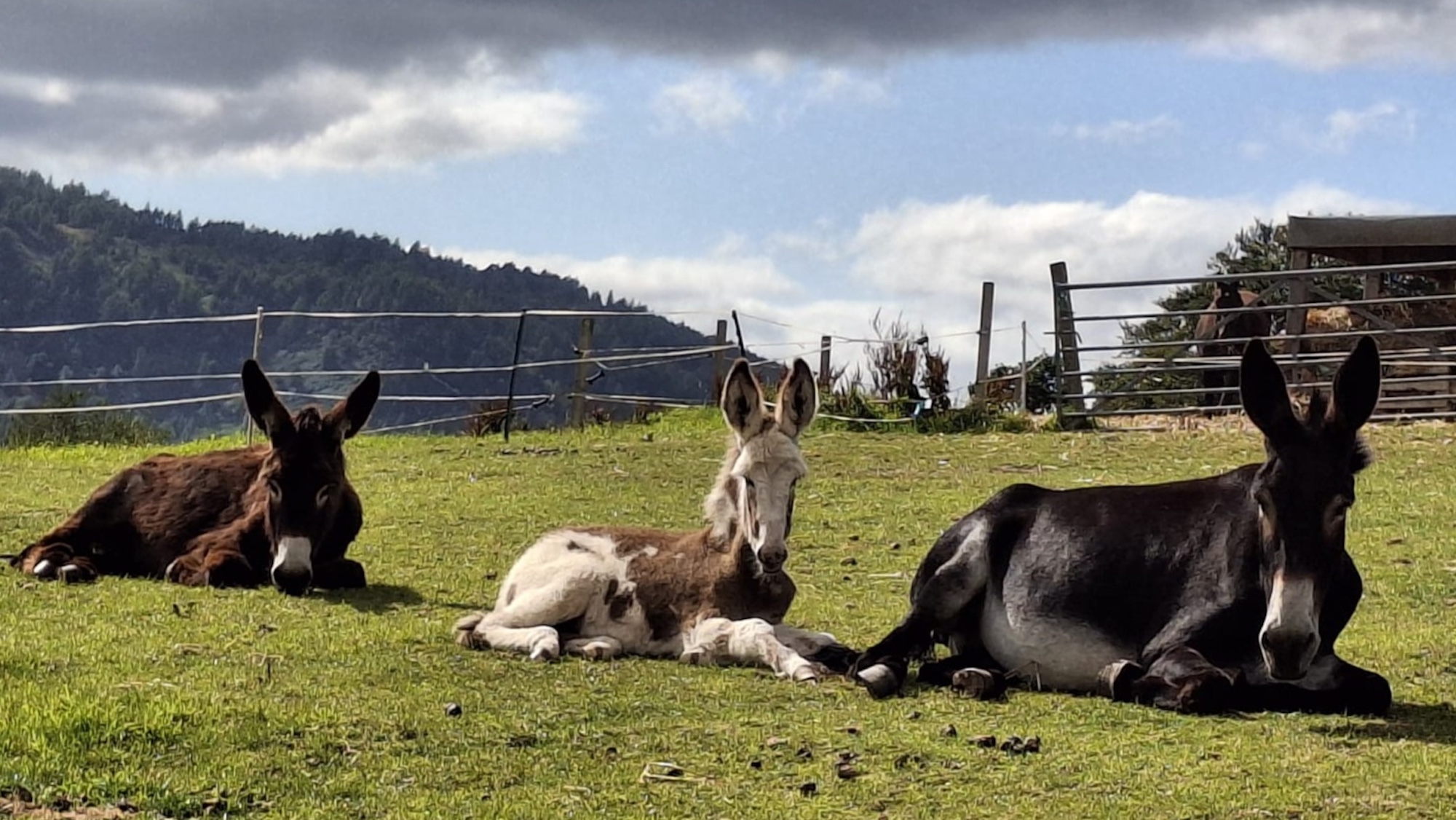
“They’re just so different from horses,” she said. “When she passed on, I thought I couldn’t not have donkeys in my life, so I got another couple of rescue donkeys.”
Karen also loves “saddle tramping”, taking horses and kit and spending days or weeks at a time in the hills. She had heard that mules were the “go-to 4×4 horses”, but having put in a great deal of research, found out that it is hard to find mules big enough to ride in this country.
“There are often little ones when it’s been an accident; somebody’s put a pony in with a donkey and you get a 12hh mule,” she said. “There used to be the occasional one from Europe, but because we’re out of the EU, shipping them across now is really expensive. So I started looking at potentially breeding my own – and to do that, obviously, to get a ridden size mule, you need a big donkey.”
Karen researched mammoth donkeys and found that these are the ones from which larger mules are often bred, but that they are endangered. Her vet told her that using frozen semen for AI was not likely to be successful, but then she heard of a pregnant mammoth donkey in England.
“So that kind of happened!” she said. “At my equestrian centre, we focus very much on positive reinforcement, a horse-centred approach; they all live out in herds. There’s only one mule UK [social media] page and I’d posted to say I’d love a mule, any idea of where people can get them, and this lady got in touch and said ‘I follow your page, I really like what you do, and I’ve got this big spotty mule called Milton, who I’ve been thinking about maybe selling’.”
Karen said the previous owner was not immediately sure she did want to sell, but eventually, she invited Karen to meet him.
“I went down and, bless him, he came and just put his head right in my chest, and it was love at first sight, for me anyway,” she said. “And that was it. So now I have one massive spotty mule, I have a massive mammoth donkey jack and a donkey jenny. So those two can now have mammoth donkey offspring, and with the mammoth jack I can breed my own ridden-sized mules with a couple of my own mares. We’re going to put mammoth donkeys and hopefully ridden-sized mules back on the map, in the UK at least.”
Milton arrived last spring, and Karen said he is a “typical mule”.
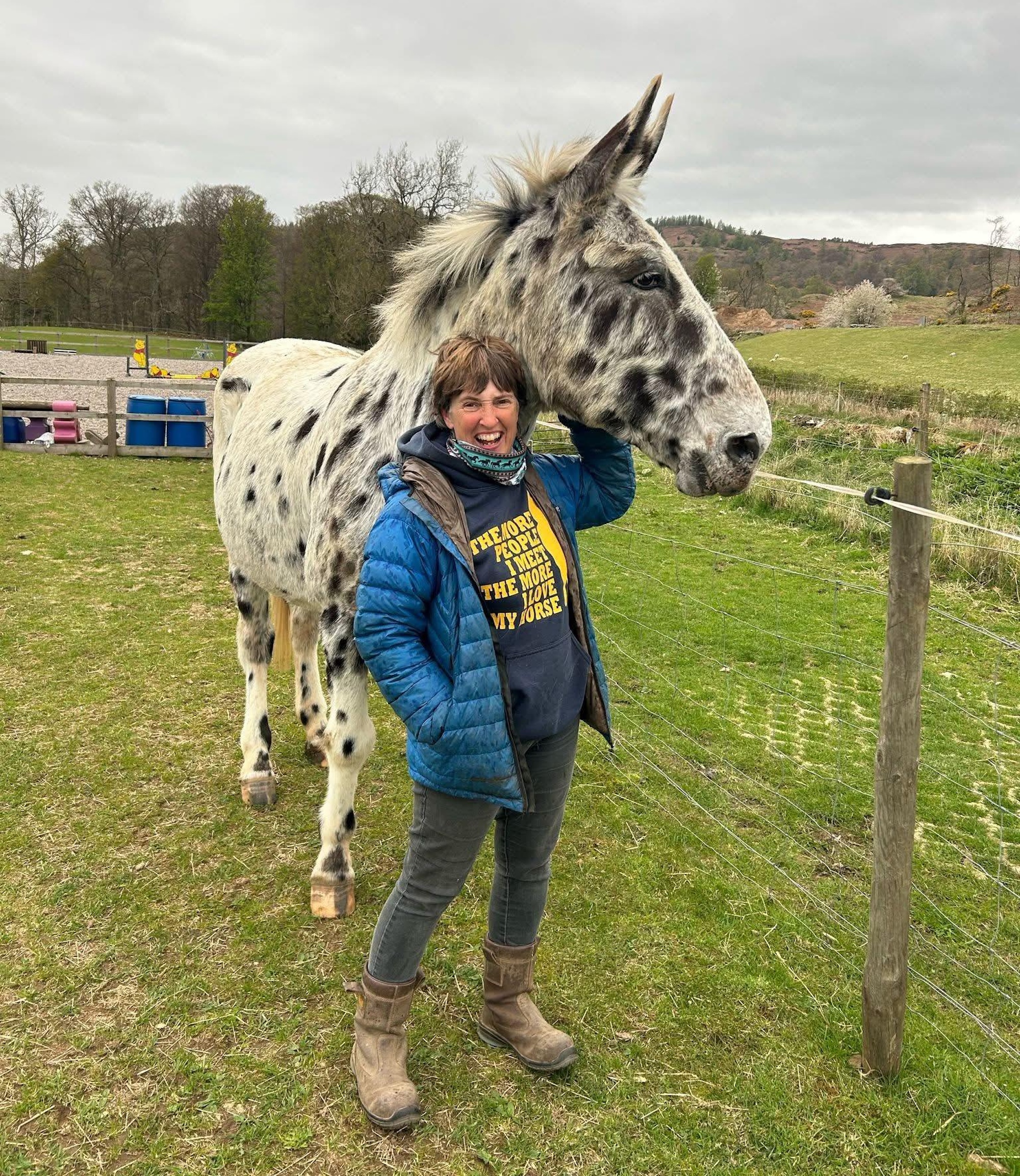
“In that he’s got no steering and no brakes, and you’ve not got a hope in hell unless he’s on board with you,” she said. “I’m not sure how much riding he’s had; he’s been driven a lot, so I’ve had to strip him right back. I ride him with no tack – because I have no control anyway! – So I just ride him bareback with no bridle in the arena, trying to get him to go off my voice and seat cues with the clicker training. He’s got the slowest bolt in the world, because he just goes for home at a walk; it’s like Thelwell, sitting there with absolutely no control whatsoever.”
Karen said donkeys and mules have a reputation for being stubborn, but that this is because although horses’ instinctive reaction to fear is flight, theirs is to freeze.
“When horses get a fright, they spook, turn, run away,” she said. “Donkeys are freeze animals, so they tend to stop and evaluate it. And in that time, if you try to get them to do something, they’re saying ‘Well, this thing could kill me, so no, I’m just going to stand here and stare it out and decide’. That’s actually the ‘stubbornness’. You have to work with them; there’s no way you can convince them to do anything unless it’s through trust and respect.”
Karen is currently injured and not in the saddle, but she said the tackless riding and clicker training had been working with Milton.
“Mules are really clever, much more than horses,” she said. “I do target training and one day with Milton, I’d forgotten the target but there was a football in the arena, and in one session, he learned how to play with it. That would have taken three or four sessions with a horse but he learned it in 15-20 minutes. They test your training but you have to work with them.”
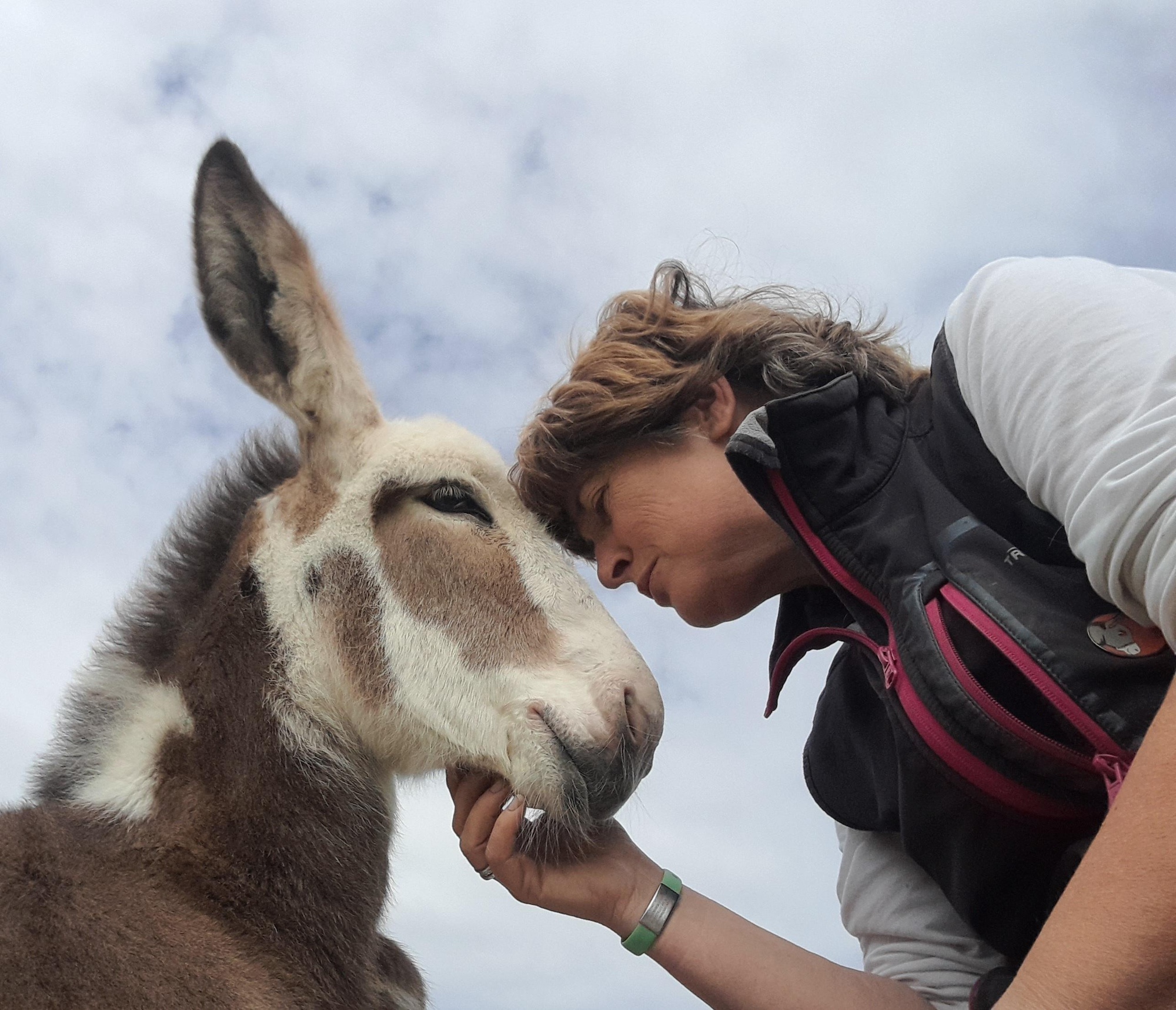
Karen added that the “freezing” behaviour means mules are much less likely to spook or spin, which might appeal to some riders, and that they are hardier and less likely to need rugging than horses.
“Milton is one of the biggest in the herd but he’s not interested in any fighting or aggro whatsoever,” she said. “He’s just a big gentle giant, and a lovely, very affectionate lad. Now he’s getting to know me, after we do a session, I’ll put him in the field then climb on the gate and sit there. He just stands with his head over the gate or on my lap, and we just watch the world go by together. He just gives off this lovely, chilled, happy mule feeling.”
Karen said she hopes Ollie, her two-year-old mammoth jack, and four-month-old mammoth foal Cheyenne, who should make 14.2hh plus, will also be ridden, and Ollie will have a breeding career.
“One of my mares who I will hopefully put to him is an appaloosa, so hopefully we’ll have a baby spotted mule in time as well,” she said. “Nobody comes to see any more, they all come to see Milton and the baby donkey, so it’s going to be even worse!”
- To stay up to date with all the breaking news from major shows throughout 2025, subscribe to the Horse & Hound website
You may also be interested in:

Mules rule ok: Wallace The Great wins first British Dressage competition
The super-mule was unfazed by the press attention and his fan club

Curious about clicker training? Start with these two simple exercises

Delight as US rule change means all systems go for showjumping mules
“This is going to open up to a whole new section of the community the sport we all care about

Giant American donkey makes 18-hour flight to start mule breeding programme in Australia
The “extremely vocal” but “loving” American mammoth donkey, Moses, stands at 15hh and arrived in Australia last month
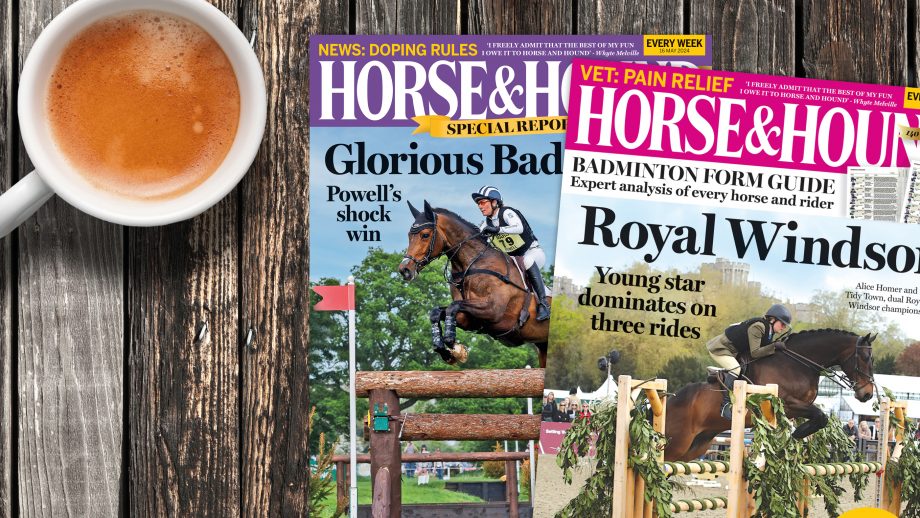
Subscribe to Horse & Hound magazine today – and enjoy unlimited website access all year round

